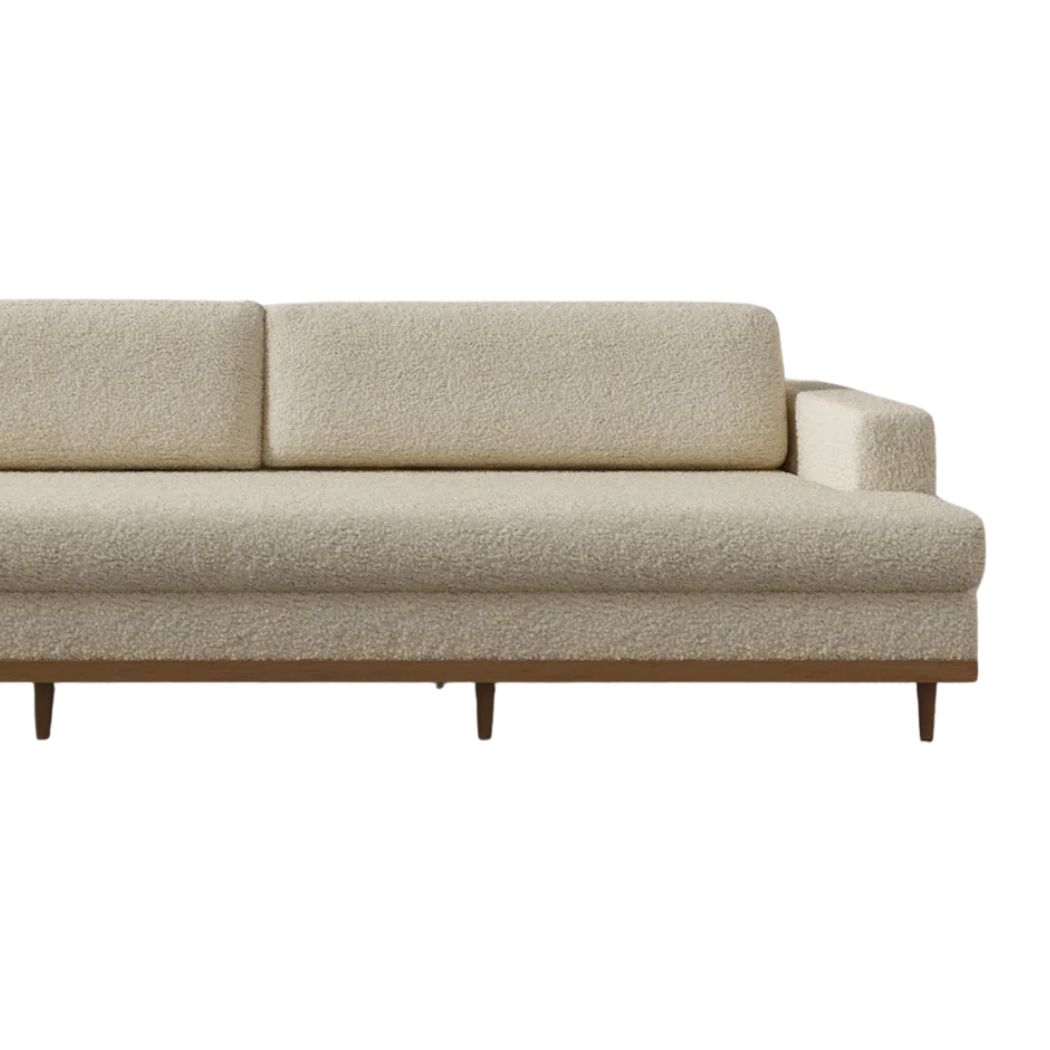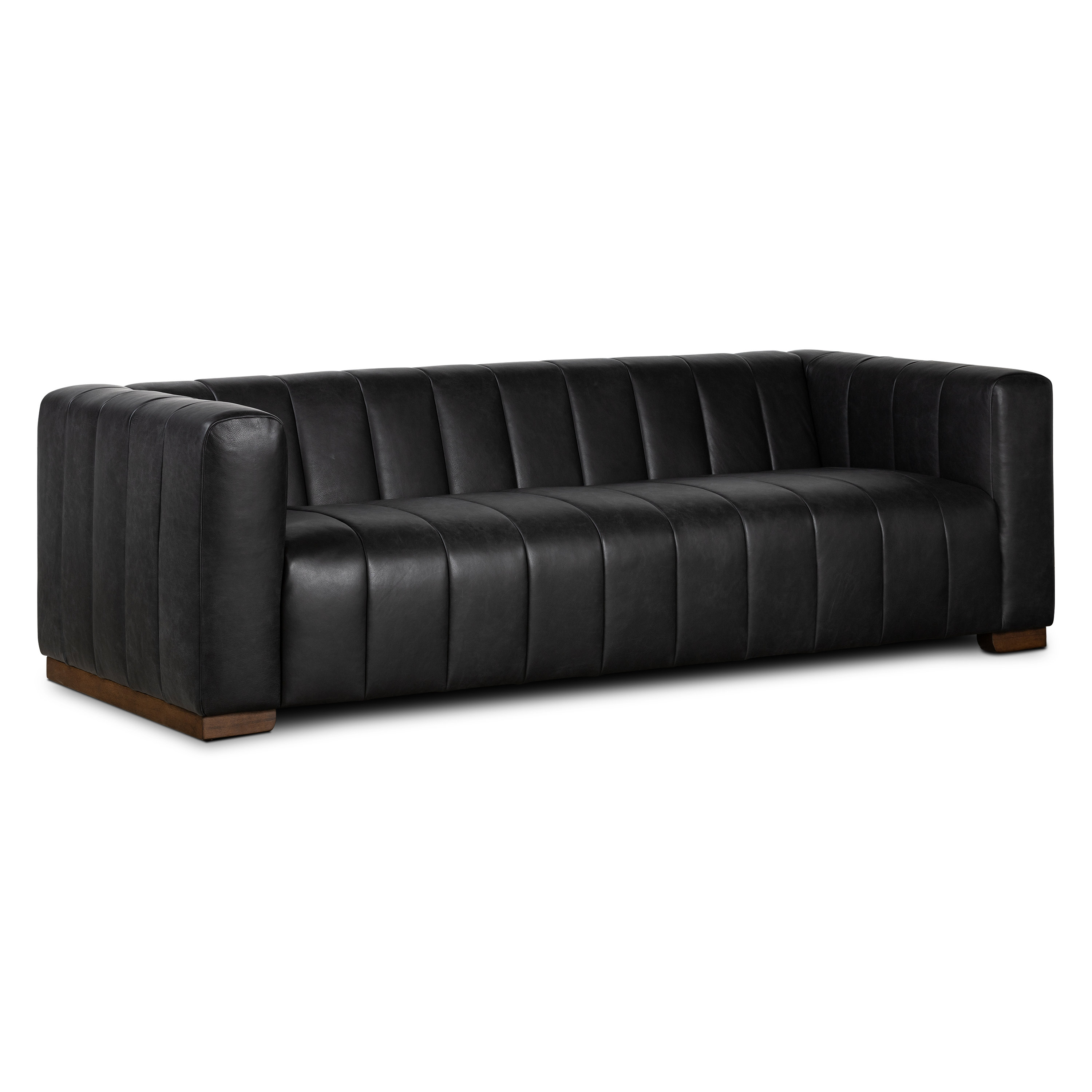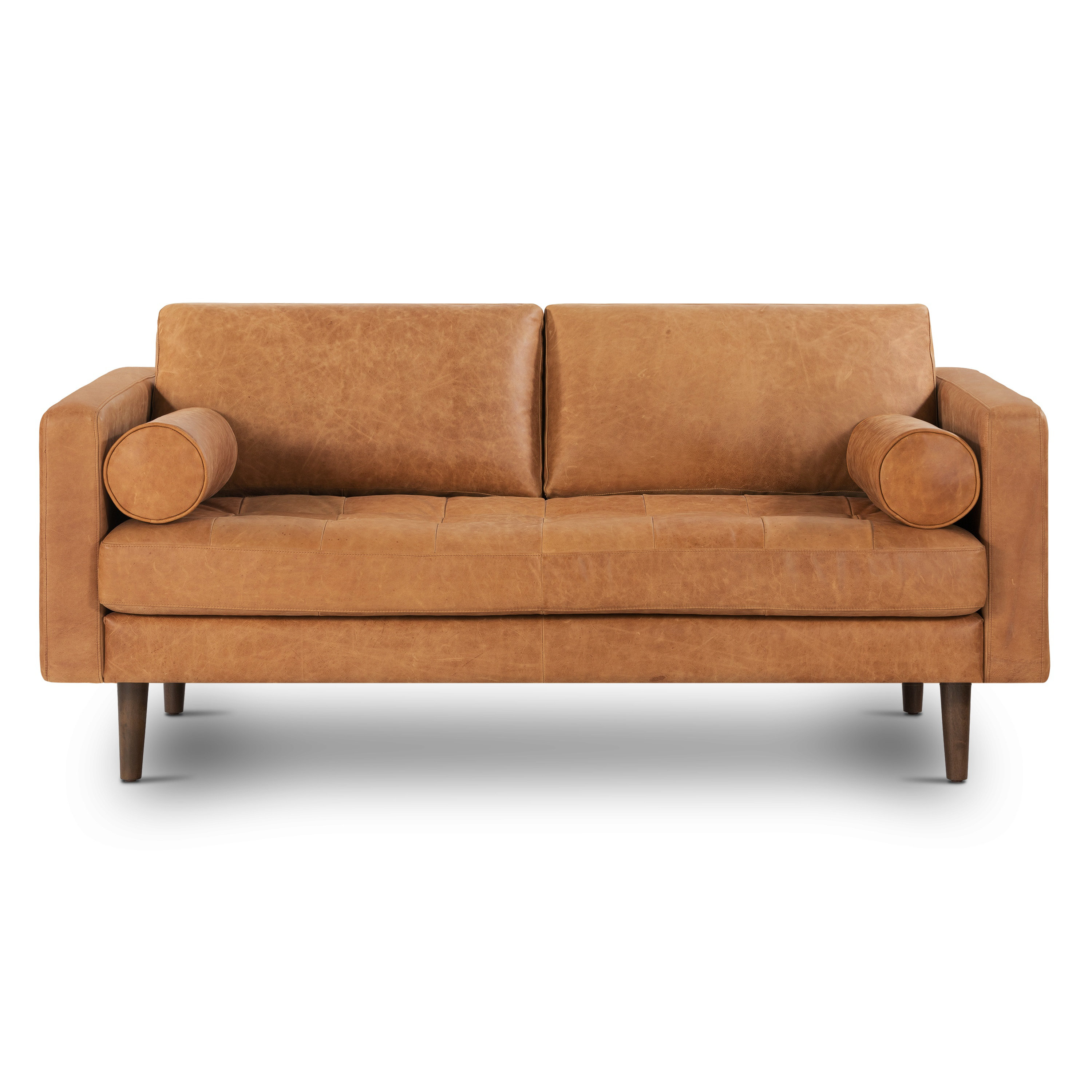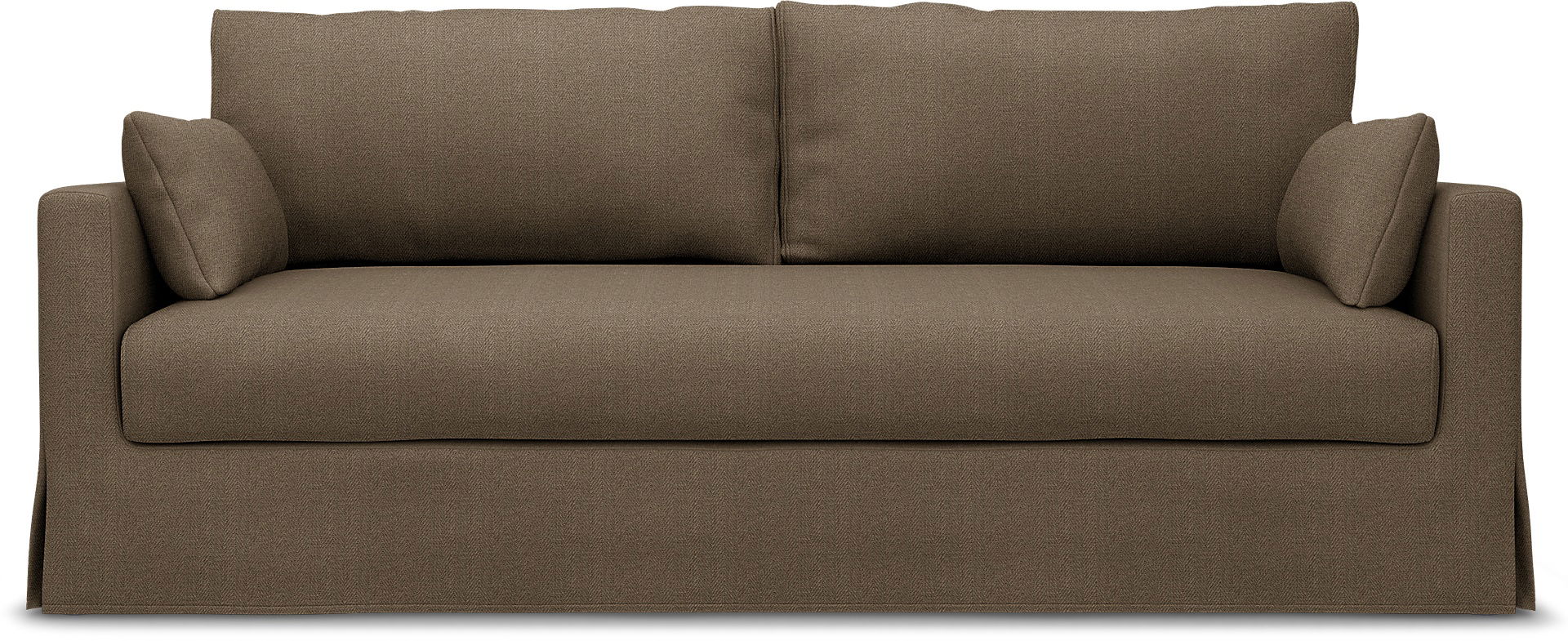How Long Should a Sofa Last? Get the Lowdown on Lifespan and Easy Ways to Extend it
We asked furniture industry insiders to help explain how sofas are tested for durability, and how you can extend the life of yours


Spend what you do on a new sofa and you'd expect it to be a feature of your home for a while, but how long should a sofa last, realistically? When you take this into account, what seems like a worthwhile expense might not be, if the lifespan isn't quite what you envisaged.
The best sofas are stylish and comfortable and they are also typically durable enough to last around 10 years. However, the quality of your purchase and how well you care for it can significantly reduce or extend this period.
To help you make an informed purchase, we asked furniture industry experts for the lowdown: how sofas are tested for durability, what you should be looking for when you're buying one, and how caring for it can maximize its lifespan. Here's what you need to know about how long a sofa should last.
So, How Long Should a Sofa Last?

There is no specific industry standard dictating how long a sofa should last, but there is a rough guide. "On average, a well-constructed sofa with solid wood frames and high quality craftsmanship can last from seven to 15 years, and potentially even longer with proper care,” says interior designer Christiane Lemieux, founder of modern luxury homewares brand Lemieux et Cie, which counts sofas among its furniture offering.
Jenon Bailie, the merchandising and design director at modern furnishing and homewares brand Room & Board, suggests a similar time period. “The lifespan is typically around 10 years, but that depends on how well the sofa is maintained and cared for,” she says.
It's also important to note that some elements of a sofa are likely to wear sooner than others. “Warranties from manufacturers often reflect this expectation, with frame warranties often extending beyond fabric or cushion guarantees,” says Christiane.
Bear in mind, though, that these figures are not definitive. “How long a sofa lasts depends on how it is constructed and how it is used,” says Patricia Bowling of the American Home Furnishings Alliance.
The Livingetc newsletters are your inside source for what’s shaping interiors now - and what’s next. Discover trend forecasts, smart style ideas, and curated shopping inspiration that brings design to life. Subscribe today and stay ahead of the curve.
How to Know if a Sofa Will Last

There are a few factors that will influence how long a sofa will last, including its frame, construction, and the upholstery fabric. Below, the experts explain a little bit more about what to look for in a durable sofa, to help you avoid common mistakes when buying a sofa.
1. Frame
For maximum sofa lifespan, it's important to pay attention to its frame. “Sofas with solid hardwood frames are more durable,” says Christiane Lemieux. “For instance, frames made from kiln-dried hardwood can resist warping and deterioration over time.”
This is one of the most important factors to check when you're buying a sofa, either in-store or online, as it not only impacts comfort but in how long your sofa is likely to hold up. There is nothing worse than sitting on a sofa that literally falls down around you.
2. Construction
Another factor you should look into before committing to a sofa, is not just what the frame is made of, but how it has been constructed.
“Techniques like eight-way hand-tied springs are indicative of superior craftsmanship and can enhance the sofa's durability,” says Christiane Lemieux. “Even modern alternatives like drop-in coil springs offer a good balance between cost and durability.”
3. Cushions
The cushions on the back and seat of sofas often contain different materials, but most upholstery cushions are made from some type of polyurethane foam, according to the American Home Furnishings Alliance. Its density is what is used to gauge the foam’s durability.
As a rule of thumb, a higher density means a more durable cushion. The alliance also notes that better quality upholstered furniture uses foam with a density rating between 1.8 and 2.5, so it's worth checking the specs of your sofa before you buy it.
4. Fabric
The quality of the upholstery fabric and couch material will also determine how long the sofa is likely to last for.
“The choice of upholstery material really influences a sofa’s lifespan,” says Christiane Lemieux. “Leather sofas are praised for their durability and ease of maintenance, whereas natural fibers like cotton may require more care.”
How to Extend a Sofa's Lifespan

Knowing how to clean your sofa properly is vital to maximizing its lifespan. As for the basics: “Cushion care, cleaning/vacuuming, flipping, and fluffing cushions when possible,” says Jenon Bailie.
Christiane Lemieux agrees. “Regular cleaning, avoiding direct sunlight, rotating cushions, and using protective treatments such as Scotchgard ($14.98 from Amazon) can significantly extend a sofa’s life,” she adds.
It's also important to avoid common sofa cleaning mistakes that can compromise your seating, and to follow any specific instructions for different types of fabrics (like cleaning a leather sofa) to keep its upholstery in good condition.
Remember that reupholstering a sofa can also help to prolong its life. It’s something Christiane’s customers often do with excellent results, she says. “Usually our clients will want to refresh the upholstery after five years,” she explains. “Our high-end sofas using top-notch materials, hand-tied springs, and detailed craftsmanship can exceed 20 years or more and become heirlooms, especially if maintained well.”
FAQs
What reduces a sofa's lifespan?

The biggest factor that can limit a sofa's lifespan is how it's used, and that's particularly the case when it comes to fabric. Kids, pets, and daily wear and tear mean your upholstery can suffer.
“Your sofa needs to match your lifestyle, not your fantasy,” says Ruben Gutierrez of Errez Design. For example, if you have a dog, it's important to choose a sofa with the best couch material for dogs.
“If your living room is where life happens, you want something durable — performance fabric, microfiber, or leather. These materials can take a beating and still look new. It’s about finding that sweet spot between what looks great and what lasts.”
On the whole though, interior designer Janelle Patton, principal at Lark Interiors, also cautions to "Avoid any fabrics with acrylic — they pill."
Is sofa durability regulated?

You might also be wondering whether sofas are subject to certain regulations when it comes to durability, and the answer is no.
“Upholstered furniture is subject to several federal regulations,” explains Patricia Bowling. “However, as with most consumer products, these deal with health, safety and labeling issues.
“As with cars, appliances, apparel and many other products, durability is tied to quality, and quality is generally not something that is regulated, because not everyone wants or needs the same quality sofa. For example, someone shopping for a sofa for a formal room they rarely use may not need or want the same quality as someone shopping for a sofa they will use daily.”
There are, however, some other standards for sofas. “In the US, organizations like ASTM International (formerly American Society for Testing and Materials) and BIFMA (Business and Institutional Furniture Manufacturers Association) set standards,” says Christiane Lemieux. “In Europe, EN standards from the European Committee for Standardization (CEN) are common. ISO (International Organization for Standardization) also sets globally recognized standards for various industries, including furniture.”
How are sofas tested for durability?

While sofas aren't subject to regulations on durability, that's not to say they aren't tested to ensure they will last.
"There are specific tests for fabric durability, and the cover fabric is a key component in determining durability," says Patricia Bowling. "Many stores and brands offer fabrics in various grades of durability, so customers can choose a grade that matches their needs.”
So, what should you look for when buying a sofa that will last? “One of the key indicators of fabric durability is its ‘rub count’,” explains Patricia. “In general, residential fabrics should have a rub count of 10,000 to 25,000. Less than 10,000 is considered delicate.”
Manufacturers also test other elements of a sofa. “Frame robustness is usually assessed by tests that simulate everyday use and impact over time,” explains Christiane Lemieux. “Frames undergo repeated pressure tests, where mechanical devices simulate sitting, dropping onto the sofa, or handling to measure how the frame withstands stress over time. In static load tests frames are tested under a constant, heavy load to determine structural integrity.”
Cushion resilience is also often tested. “Cushion resilience is tested using methods that measure the ability of cushions to recover after compression,” explains Christiane. “In compression tests a load is applied to the cushion repeatedly, then the cushion’s height and firmness are measured before and after the test to see how well it retains its shape.
“Rebound resilience testing measures the cushion's ability to spring back to its original shape after being compressed. The indentation force deflection (IFD) test is another method used to assess foam cushion firmness.”
So, when determining how long a sofa should last, anywhere between seven to 15 years, but somewhere around the 10-year mark is realistic. That does rely, however, on you properly looking after your sofa, and choosing a fabric, shape, and style that suits your lifestyle.
If you're interested in finding ways to better look after your sofa, we have specific guides on all different kinds of upholstery, including how to clean a velvet sofa or how to clean couch cushions specifically that should help.

Sarah is a freelance journalist and editor. Previously Executive Editor of Ideal Home, she’s specialized in interiors, property and gardens for over 25 years. She’s written for websites including Houzz, Channel 4’s flagship website, 4Homes, and Future’s T3; national newspapers including The Guardian; and brands including Future’s Homes & Gardens, Country Homes & Interiors, Homebuilding & Renovating, and Period Living, as well as House Beautiful, Good Homes, Grand Designs, Homes & Antiques, and The English Home among others. It’s no big surprise that she likes to put what she writes about into practice, and is a serial house renovator.



